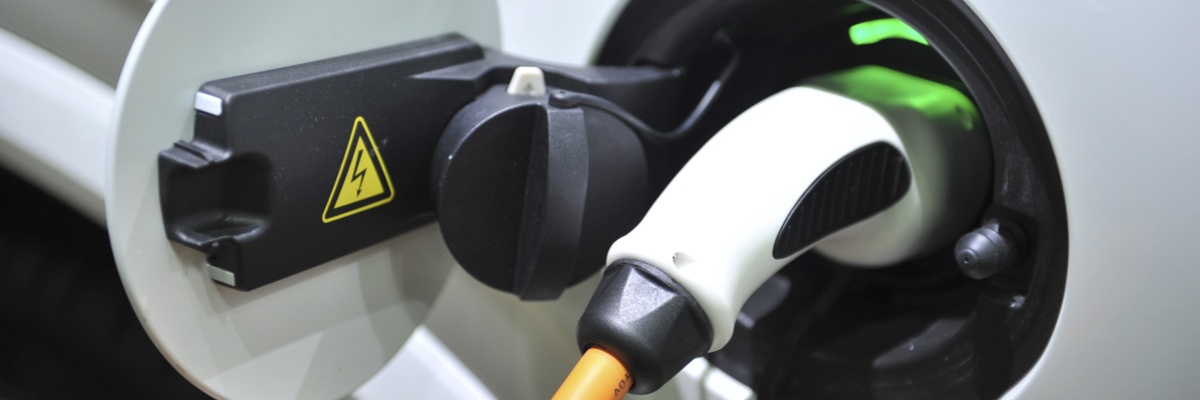

By: Eric Toro on February 6th, 2018
Expanded Metal Mesh: An Ideal Component in Fuel Cell Design
Fuel cell manufacturers are always focused on improving their product’s versatility, durability and cost. From new designs to new materials, there are many ways in which you may go about improving your product in these regards. And many fuel cell manufacturers are choosing to implement expanded metal mesh into their fuel cell designs to those ends.
From foils measuring just 50 microns thick in precious foils made of nickel, titanium, zirconium and silver, expanded metal mesh offers many instrumental design benefits. This post will walk you through those advantages, and detail how it can work to improve the performance or cost of your fuel cell applications.
Want to stay up to date on the latest thermal management technologies and trends? Get updates from our blog right in your inbox!
Versatility (and Conductivity) to Meet Your Design Specifications
The versatility of expanded metal mesh is a strong appeal for many manufacturers across a variety of industries with many diverse applications. Different fuel cells require different kinds of metals and need different properties. And micro metal meshes allow the greatest range of products, capabilities and resources, all of which are ISO 9001 certified to meet any specifications required.
The diverse range of properties of expanded metal mesh can all come customized, which include:
- Conductivity
- Thickness
- Weight
- Percentage of open area
- Surface area
Conductivity is an especially important variable in fuel cell applications. You need materials that are conductive enough to get power out of a cell without causing damage. Formed from one solid sheet of metal, expanded metal meshes are great conductors. Conductivity is more uniform because the strands don’t move under pressure.
Because fuel cells are made up of several layered cells, having cell consistency from layer to layer is very important for the overall efficiency of the fuel cell stack. Conversely, woven-wire mesh and similar products that require welds or connections are inconsistent conductors because wires only make point contacts at each intersection which leads to higher resistance values.
They can also separate and move under pressure changing the conductivity and the opening sizes. These changes in opening sizes can restrict the flow over the catalyst causing a cell to “wet out” thereby reducing the overall efficiency of the cell.
The electrical consistency of expanded metals isn’t its only conductive benefit, either. Expanded metal mesh is also a good conductor of magnetic flux and thermal heat, improving the performance of a fuel cell.
Robust Strength-to-Weight Ratio
The physical integrity of a metal is a key variable in determining which material to use for your application. But there are also advantages to expanding a metal to form an expanded mesh rather than using a solid metal sheet.
Expanding a sheet into a mesh adds significant strength to the interior of a cell, and the three-dimensional shape of the meshes enable the material to stand a far heavier point load than similar products or a flat sheet. The uncut knuckles of expanded mesh can specifically withstand stress better than coils of a solid foil. And they also help minimize the weight of the material in a fuel cell.
Beyond physical force, mesh can also better withstand high temperatures – a key component for fuel cells and the very high temperatures at which they operate. Expanded metal can expand and contract with heat variations. In these applications, you can use expanded metal mesh as:
- Gas diffusion layer
- Coating substrates for catalysts
- Current collectors
- Membrane support to add rigidity so they don’t over-flex and tear
There are also special process to make mesh materials extremely smooth to prevent burrs from puncturing through a fuel cell’s separator or membrane, which could create a short and cut into the life of your fuel cell.
Maximizing Surface Area and Minimizing Costs
Especially if you’re using precious metals like niobium, zirconium, nickel, silver or titanium, for example, expanding its foil minimizes your material costs. Compared to similar perforated or etched products, expanded metal meshes are a far more economical solution.
There are many benefits of expanded materials over woven wire as well. Conductivity is more consistent because the strands don’t move under pressure. Also, woven materials only make point contacts at each intersection which leads to high resistance values. Because fuel cells are made up of several cell stacks, having cell consistency from layer to layer is very important.
The unique 3D geometry of expanded material can provide a slightly higher surface area than perforated, chemically etched, or woven products. The slightly higher surface area allows for more catalyst materials to be applied increasing the efficiency of the cell. For even more surface area, materials can be corrugated to provide even more surface area in the same footprint. The surface area and flow can be optimized for your specific application, as well as the open area. Your supplier could also supply a corrugated material.
Expanded Metal Mesh is an Optimal Solution
With weight constraints and the need to make the lightest fuel cell possible, expanded mesh is the optimal choice. A very light but strong material, expanded metals require less metal per unit area. And when using materials valued at over $100 per pound, the more you can reduce scrap and use lighter metal, the better.
Implementing expanded metal mesh in your fuel cell applications will not only reduce your materials costs, but also improve your product’s performance and durability. Whether you’re a product owner or engineer, you can leverage expanded metals to improve your overall product designs and increase revenue.
Want to know more about expanded mesh for fuel cells? Subscribe to our blog to discover the latest updates.

